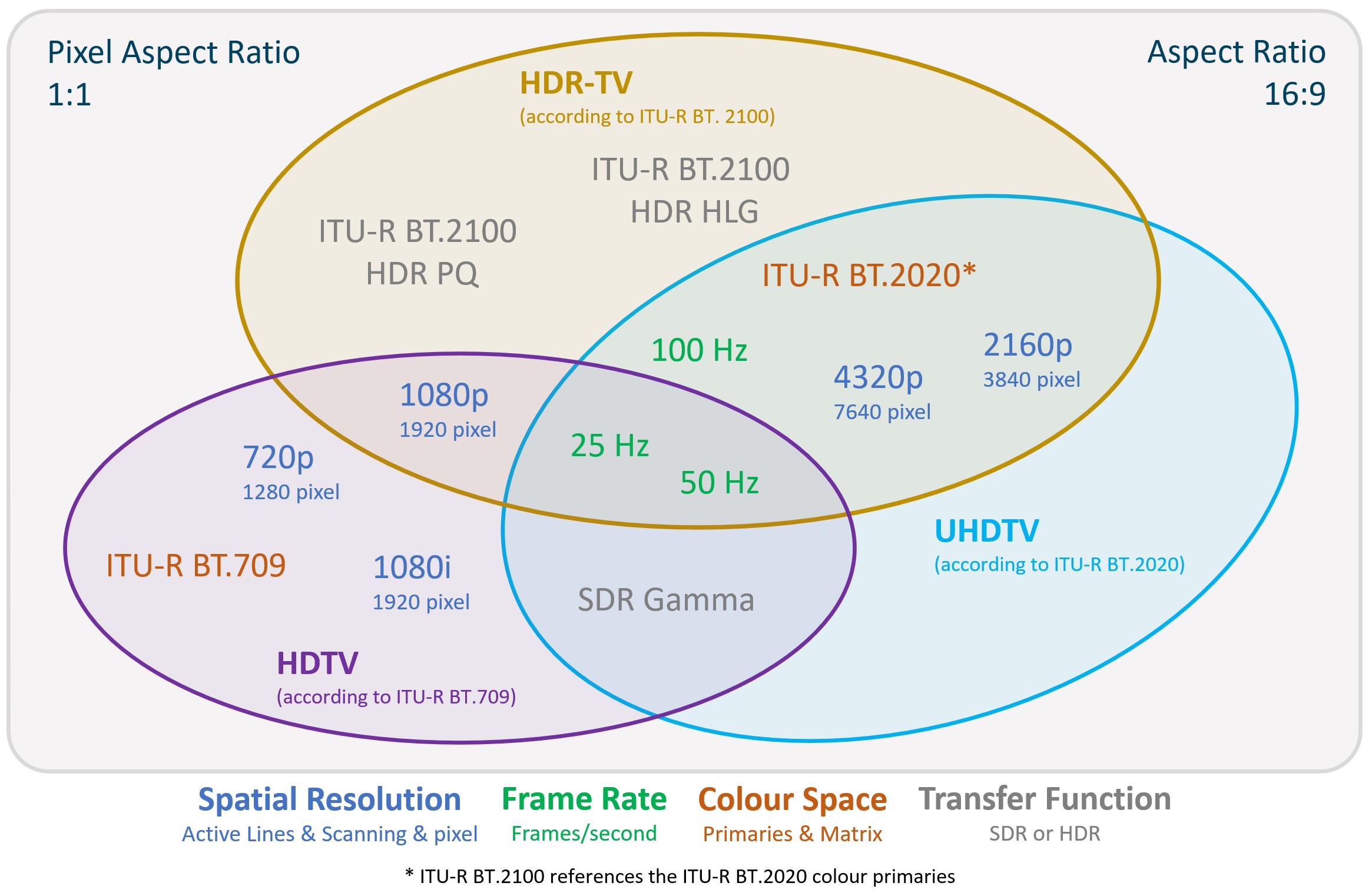There is a large confusion about the different TV-systems we are all talking and writing about. Is it UHD? Is it 4k or 8k? Is it with or without High Dynamic Range (HDR)? And what about the colour space? Where is what defined? Is it possible to agree on a common wording?
Looking into the broadcast production area we are often referring to standards created by the International Telecommunication Union, especially the Radiocommunication sector (ITU-R). All TV-systems used worldwide have been specified in ITU-R documents. In practice when dealing with the above-mentioned notions there are three important specifications:
-
- ITU-R BT.709 – today’s HDTV
- ITU-R BT.2020 – UHDTV
- ITU-R BT.2100 – HDR-TV
The specifications are all available for free. The relationship between HDTV, UHDTV and HDR-TV is shown in Figure 1. The diagram is not complete for worldwide standards. It is focusing on Europe (50 Hz based).

Figure 1 – overview of TV Systems
Some important take-aways should be mentioned:
- Above mentioned TV-systems are always 16:9 using square pixels
- Four main points are needed to describe a broadcasting standard:
- Spatial resolution (number of lines)
- Frame rate (pictures per second)
- Colour space (colour primaries including the colour matrix)
- Transfer function
- UHDTV according to ITU-R BT.2020 is using the traditional gamma law as transfer function (like in ITU-R BT.709), no HDR is specified here.
- ITU-R BT.2020 has defined the primaries and matrix for wide colour gamut (WCG). HDR-TV (ITU-R BT.2100) uses the identical colour primaries and matrix.
- “4K” and “8K” are often used to describe UHDTV but they are not used in any ITU-R Television Standards. Marketing departments often use them (always use uppercase K) when referring to consumer devices, content or services.
- “4k” or “8k” are often confused with the digital cinema standards where they refer to the movie’s horizontal resolution of “4k” (4096 pixels) or “8k” (8192 pixels) which are usually not supported by broadcasting standards and technologies.
We will try to be consistent in using the terms UHDTV and HDR-TV for all coming publications to be in-line with the ITU-R and in order to avoid confusion.

